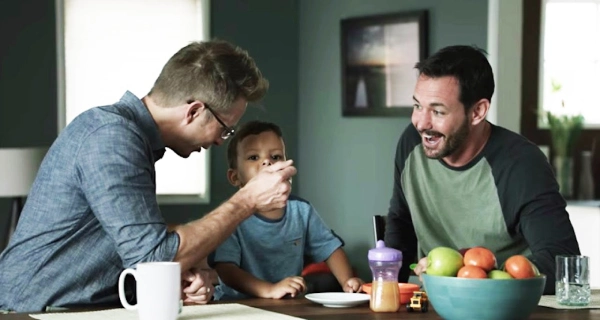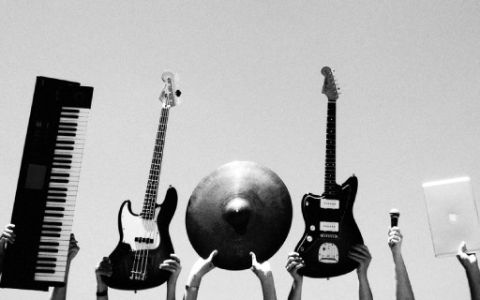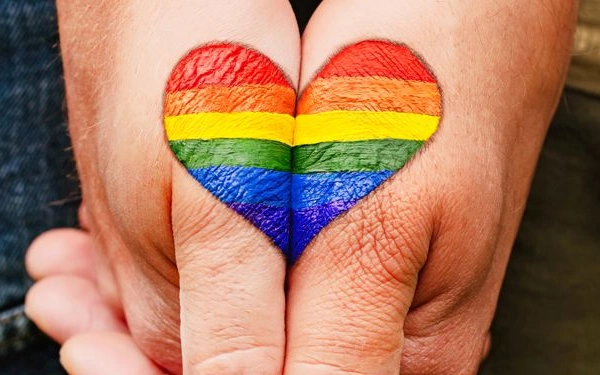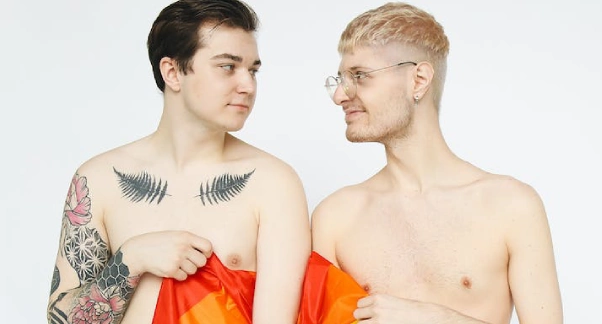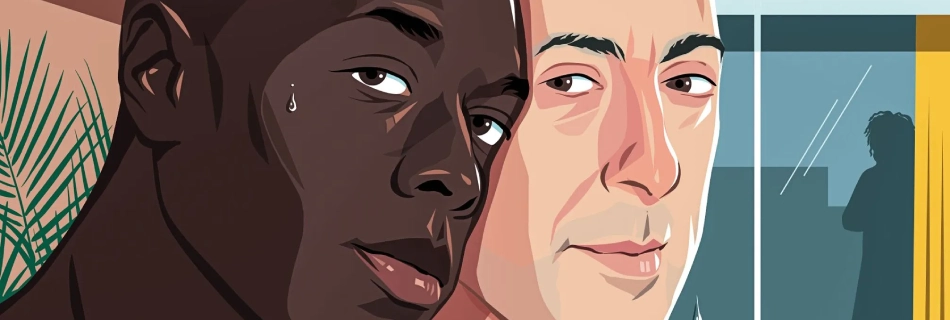
The phrase “white top black bottom” refers to sexual roles within the LGBTQ+ community. Generally, it is used to describe a relationship or sexual encounter in which the person designated as “top” (or active partner) is white, heterosexual-identified, and penetrates another person who identifies as Black and is identified as “bottom” (or receptive partner). It can be used to refer to same-sex encounters between two people of different racial backgrounds or two people of any race.
In recent years, this phrase has become increasingly popular among the gay community due to its representation of interracial relationships. However, the phrase often carries with it connotations of racialized power dynamics and was initially coined in response to a prevalence of assumptions that when two men engage in a sexual interaction—particularly if they are from different racial backgrounds—that one must dominate while another submits.
It is important to note that such power dynamics carry various social implications: historically, Black men have been subject to racism, particularly if they engage with White partners; similarly, stereotypes surrounding over-sexualization may amplify stigma directed at Black men and women. As such, this phrase should not be taken lightly; instead, it should reflect an understanding between both partners that aims towards mutual respect, empathy and communication within their relationship.
Challenging Stereotypes: Respecting Diversity in Gay Dynamics
The concept of "white top black bottom gay" is a term used in the gay community to describe a sexual preference or role in sexual activity. It refers to a sexual dynamic where a white man takes on the dominant or "top" role, while a black man takes on the submissive or "bottom" role.
This term has been the subject of controversy and criticism within the gay community, as it perpetuates racial stereotypes and fetishization. It reduces individuals to their race and reinforces harmful power dynamics within sexual relationships.
It is important to recognize that every individual has their own unique preferences and desires in their sexual relationships. However, it is crucial to approach these dynamics with respect and understanding, rather than perpetuating harmful stereotypes and discrimination. It is important to challenge and question harmful language and behavior within the LGBTQ+ community to promote inclusivity and acceptance for all individuals.
The Cultural Impact: Challenging Stereotypes in 'White Top Black Bottom Gay
The representation of "white top black bottom gay" in media and society has cultural implications that reflect the intersectionality of race, sexuality, and power dynamics. This phrase refers to a sexual position preference within the gay community where a white male assumes the dominant "top" position and a black male assumes the submissive "bottom" position.
The representation of this dynamic in media and society perpetuates harmful stereotypes and reinforces power imbalances based on race and sexuality. It can also contribute to the fetishization and objectification of black bodies, as well as the marginalization of black voices and experiences within the LGBTQ+ community.
It's important to recognize that sexual preferences and power dynamics within relationships are complex and personal, but it's also crucial to acknowledge the cultural implications of these representations in media and society. We need to strive for more diverse and inclusive representation that reflects the complexity and diversity of the LGBTQ+ community and avoids perpetuating harmful stereotypes and power imbalances.
Love Beyond Boundaries: Embracing 'White Top Black Bottom Gay' Relationships
Over the years, there has been a significant shift in attitudes towards "white top black bottom gay" relationships. In the past, these relationships were often viewed with suspicion and disapproval, with many people believing that they were unnatural or immoral. However, in recent years, there has been a growing acceptance of these relationships, with many people recognizing that love knows no boundaries.
One of the main reasons for this shift in attitudes is the growing visibility of "white top black bottom gay" couples in popular culture. From movies and TV shows to social media and online communities, these relationships are increasingly being portrayed in a positive light, helping to break down stereotypes and prejudices.
In addition, more and more people are speaking out in support of "white top black bottom gay" relationships, with celebrities, politicians, and other public figures lending their voices to the cause. This has helped to create a sense of community and solidarity among "white top black bottom gay" couples, as well as raising awareness of the challenges they face and the need for greater acceptance and understanding.
Overall, while there is still work to be done in terms of achieving full acceptance and equality for "white top black bottom gay" couples, the shift in attitudes in recent years is a positive step forward. By continuing to challenge stereotypes and prejudices, and by celebrating love in all its forms, we can create a more inclusive and accepting society for everyone.
Nurturing Respectful and Equal Relationships Across Differences
It's important to note that there is no one-size-fits-all answer to what is considered "nice" in any type of relationship, including those between individuals with different racial or ethnic backgrounds. However, there are some general guidelines that can be helpful in navigating any relationship.
First and foremost, respect is key. This means respecting your partner's boundaries, beliefs, and cultural background. It's important to communicate openly and honestly with your partner about your own beliefs and values, and to listen actively to theirs. This can help to build trust and understanding between partners.
Another important aspect of a healthy relationship is equality. This means treating your partner as an equal, regardless of their race or ethnicity. It's important to acknowledge and celebrate each other's differences, while also recognizing the similarities that bring you together.
Lastly, it's important to be supportive of your partner. This means being there for them emotionally, physically, and mentally. It also means being willing to learn and grow together, and to support each other's goals and aspirations.
In summary, a "nice" relationship between individuals with different racial or ethnic backgrounds is built on respect, equality, and support. By focusing on these key aspects, partners can build a strong and healthy relationship that can stand the test of time.

